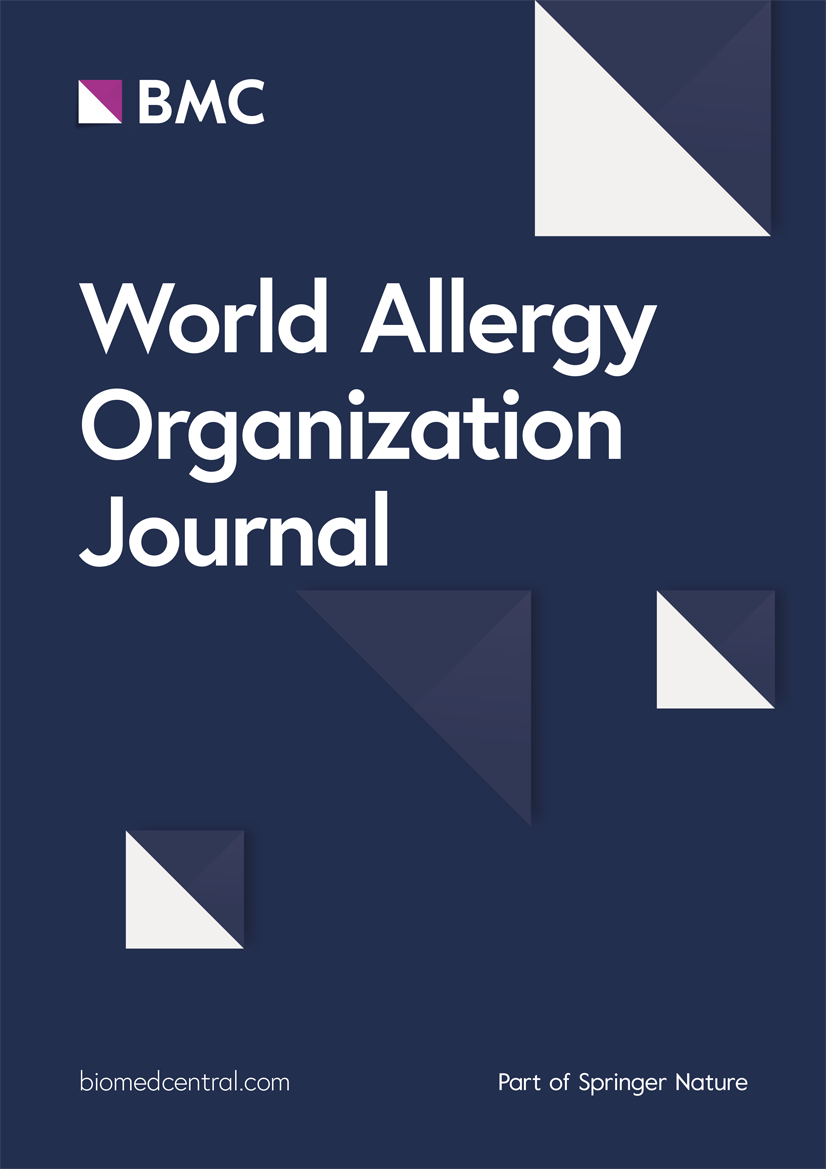一年内ABPA治疗升级的多维分级系统:HEID评分
IF 3.9
2区 医学
Q2 ALLERGY
引用次数: 0
摘要
易感性复发是变应性支气管肺曲霉病(ABPA)的一个重要特征;迫切需要早期识别复发风险高的患者。根据预后对ABPA的严重程度进行分类的实用评分是不可用的。方法回顾性分析2010年1月至2022年12月在我院诊断为ABPA的患者。采用Logistic回归分析探讨ABPA治疗升级的独立危险因素,并选择纳入最终评分的变量。结果103例ABPA患者入组。嗜酸性粒细胞计数>;1000/μL,烟曲霉特异性IgE (Sp-IgE) >3.5 kUA/L,棕黑色粘液塞、高衰减粘液(HAM)的咳痰量和预测一氧化碳扩散能力的百分比(DLCO/pred) <;60%是ABPA治疗升级的独立危险因素。初始抗真菌治疗是一个独立的保护因素。最终量表称为HEID,包含4个二分类变量:HAM (H, 1分);嗜酸性粒细胞计数(E,截止1000/μL, 1点);Sp-IgE (I,截止3.5 kUA/L, 1分)和DLCO/pred (D,截止60%,1分)。0-1分表示复发风险低;2-4分表示复发风险高。结论该多维度分级系统易于使用,能够准确地对ABPA治疗升级风险进行分级。本文章由计算机程序翻译,如有差异,请以英文原文为准。
A multidimensional grading system for ABPA treatment escalation within the first year: The HEID score
Background
Susceptibility to relapse is an important feature of allergic bronchopulmonary aspergillosis (ABPA); early identification of patients at high risk of relapse is urgently needed. A practical score that classifies the severity of ABPA according to its prognosis is not available.
Methods
We retrospectively reviewed patients with a diagnosis of ABPA at our hospital between January 2010 and December 2022. Logistic regression analysis was used to investigate independent risk factors for ABPA treatment escalation and select the variables included in the final score.
Results
One hundred and three patients with ABPA were enrolled in this study. An eosinophil count >1000/μL, Aspergillus fumigatus–specific IgE (Sp-IgE) >3.5 kUA/L, expectoration of brownish-black mucus plugs, high-attenuation mucus (HAM) and a percentage of the predicted diffusing capacity of carbon monoxide (DLCO/pred) < 60% were independent risk factors for ABPA treatment escalation. Initial treatment with antifungals was an independent protective factor. The final scale, designated HEID, incorporated 4 dichotomized variables: HAM (H, 1 point); eosinophil count (E, cutoff 1000/μL, 1 point); Sp-IgE (I, cutoff 3.5 kUA/L, 1 point) and DLCO/pred (D, cutoff 60%, 1 point). A score of 0–1 point indicated a low relapse risk; 2–4 points indicated a high relapse risk.
Conclusion
This easy-to-use multidimensional grading system was capable of accurately classifying the risk of treatment escalation in ABPA.
求助全文
通过发布文献求助,成功后即可免费获取论文全文。
去求助
来源期刊

World Allergy Organization Journal
Immunology and Microbiology-Immunology
CiteScore
9.10
自引率
5.90%
发文量
91
审稿时长
9 weeks
期刊介绍:
The official pubication of the World Allergy Organization, the World Allergy Organization Journal (WAOjournal) publishes original mechanistic, translational, and clinical research on the topics of allergy, asthma, anaphylaxis, and clincial immunology, as well as reviews, guidelines, and position papers that contribute to the improvement of patient care. WAOjournal publishes research on the growth of allergy prevalence within the scope of single countries, country comparisons, and practical global issues and regulations, or threats to the allergy specialty. The Journal invites the submissions of all authors interested in publishing on current global problems in allergy, asthma, anaphylaxis, and immunology. Of particular interest are the immunological consequences of climate change and the subsequent systematic transformations in food habits and their consequences for the allergy/immunology discipline.
 求助内容:
求助内容: 应助结果提醒方式:
应助结果提醒方式:


